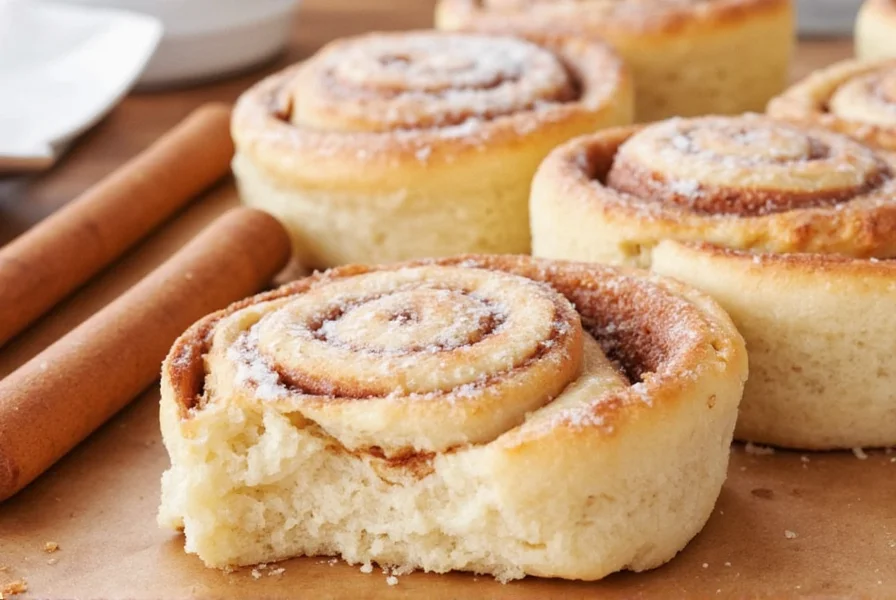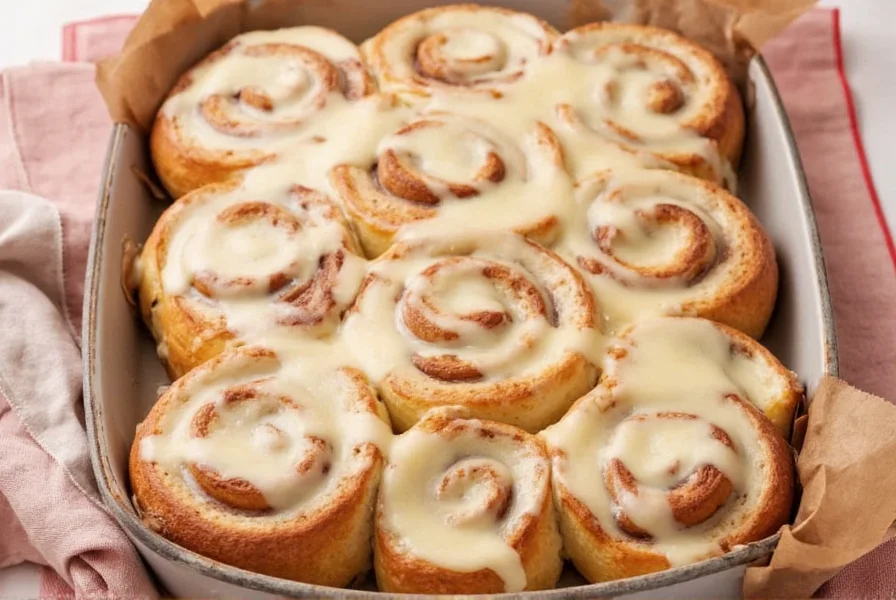Every baker knows the disappointment of flat, dense, or filling-leaking cinnamon rolls. After testing dozens of techniques across multiple baking sessions, we've identified the most reliable methods that consistently deliver bakery-quality results at home. These scientifically-backed approaches address the core challenges of cinnamon roll preparation: dough consistency, filling distribution, and baking precision.
Mastering Dough Preparation
Perfect cinnamon roll dough requires precise temperature management. Many home bakers struggle with over-proofed or dense rolls because they skip this critical step. The ideal dough temperature after mixing is 75-78°F (24-26°C). Use this professional technique: mix dough with cold liquid ingredients, then let it rest for 20 minutes before kneading. This autolyse method develops gluten structure without excessive handling.
For easy cinnamon roll hacks for beginners, try the "dough temperature cheat sheet" below:
| Room Temperature | Liquid Temperature | Expected Rise Time |
|---|---|---|
| Cool (65-70°F) | 85°F warm | 90-120 minutes |
| Average (70-75°F) | 75°F room temp | 75-90 minutes |
| Warm (75-80°F) | 65°F cool | 60-75 minutes |
Filling Distribution Secrets
The number one cause of filling leakage is uneven distribution. Instead of sprinkling cinnamon sugar directly on the dough, create a paste by mixing 2 tablespoons of softened butter with your cinnamon-sugar mixture. This time-saving cinnamon roll preparation tip ensures even coverage and prevents pooling. For clean slices every time, use dental floss instead of a knife—simply slide it under the roll and cross the ends to cut through cleanly without squishing.
Want to prevent that dreaded "cinnamon roll filling leakage"? Freeze your shaped rolls for 15 minutes before baking. This simple technique solidifies the filling, preventing it from oozing out during the initial baking phase while still allowing proper expansion.
Baking Precision Techniques
Professional bakeries use steam injection ovens to create that perfect crust, but home bakers can replicate this with a simple hack. Place a metal pan on the bottom rack of your oven while preheating. When you put your cinnamon rolls in, carefully pour 1 cup of hot water into the pan. The resulting steam creates a moist environment that prevents premature crust formation, allowing rolls to expand fully.
For best cinnamon roll dough rising techniques, try the cold fermentation method. After shaping your rolls, place them in the pan, cover tightly, and refrigerate overnight. The slow, cold rise develops complex flavors while maintaining structure. When ready to bake, let them sit at room temperature for 30 minutes, then bake as usual.
Creative Flavor Variations
Move beyond basic cinnamon with these creative cinnamon roll flavor variations that require minimal additional ingredients. Add 1 teaspoon of instant espresso powder to your filling for depth of flavor without coffee taste. For citrus notes, incorporate 1 tablespoon of finely grated orange zest into the sugar mixture. Nut lovers can press chopped toasted pecans into the filling layer before rolling.

Make-Ahead and Storage Solutions
Unbaked cinnamon rolls freeze exceptionally well. After shaping, place them on a parchment-lined baking sheet, freeze until solid (about 2 hours), then transfer to freezer bags. When ready to bake, place frozen rolls in a greased pan, cover, and let rise at room temperature for 3-4 hours before baking. This make-ahead cinnamon roll strategy gives you fresh-baked rolls with minimal morning preparation.
For perfectly reheated leftovers, avoid the microwave. Instead, wrap individual rolls in damp paper towels and warm in a 300°F oven for 8-10 minutes. This method restores moisture without creating a gummy texture.
Frequently Asked Questions
How do I prevent my cinnamon rolls from becoming dry?
The key to moist cinnamon rolls is precise baking time and proper storage. Bake until the internal temperature reaches 190°F (88°C), not just until golden brown. Overbaking by even 2-3 minutes dries out the rolls. Immediately after baking, brush with melted butter before adding icing to seal in moisture. Store cooled rolls in an airtight container with a slice of bread to maintain humidity.
Why do my cinnamon rolls deflate after taking them out of the oven?
Deflation typically occurs from over-proofing or sudden temperature changes. Ensure your dough rises until just doubled (not more), which usually takes 60-90 minutes at room temperature. Avoid opening the oven during the first 15 minutes of baking. When removing rolls, leave the oven door slightly ajar for 5 minutes before taking them out to allow gradual temperature adjustment.
Can I use margarine instead of butter in cinnamon rolls?
While possible, margarine isn't recommended for optimal results. Butter's 80% fat content and specific water ratio create the perfect steam pockets during baking that contribute to flaky layers. Margarine often contains more water and stabilizers that can make rolls dense or greasy. For best texture and flavor, use unsalted butter at precise room temperature (65-68°F).
What's the ideal cinnamon to sugar ratio for filling?
The professional standard is 2-3 tablespoons of ground cinnamon per cup of sugar. For balanced flavor without bitterness, use 2½ tablespoons per cup. For darker, more robust cinnamon flavor, increase to 3 tablespoons. Always mix cinnamon with room-temperature sugar and let the mixture sit for 10 minutes before using to allow the oils to distribute evenly.











 浙公网安备
33010002000092号
浙公网安备
33010002000092号 浙B2-20120091-4
浙B2-20120091-4